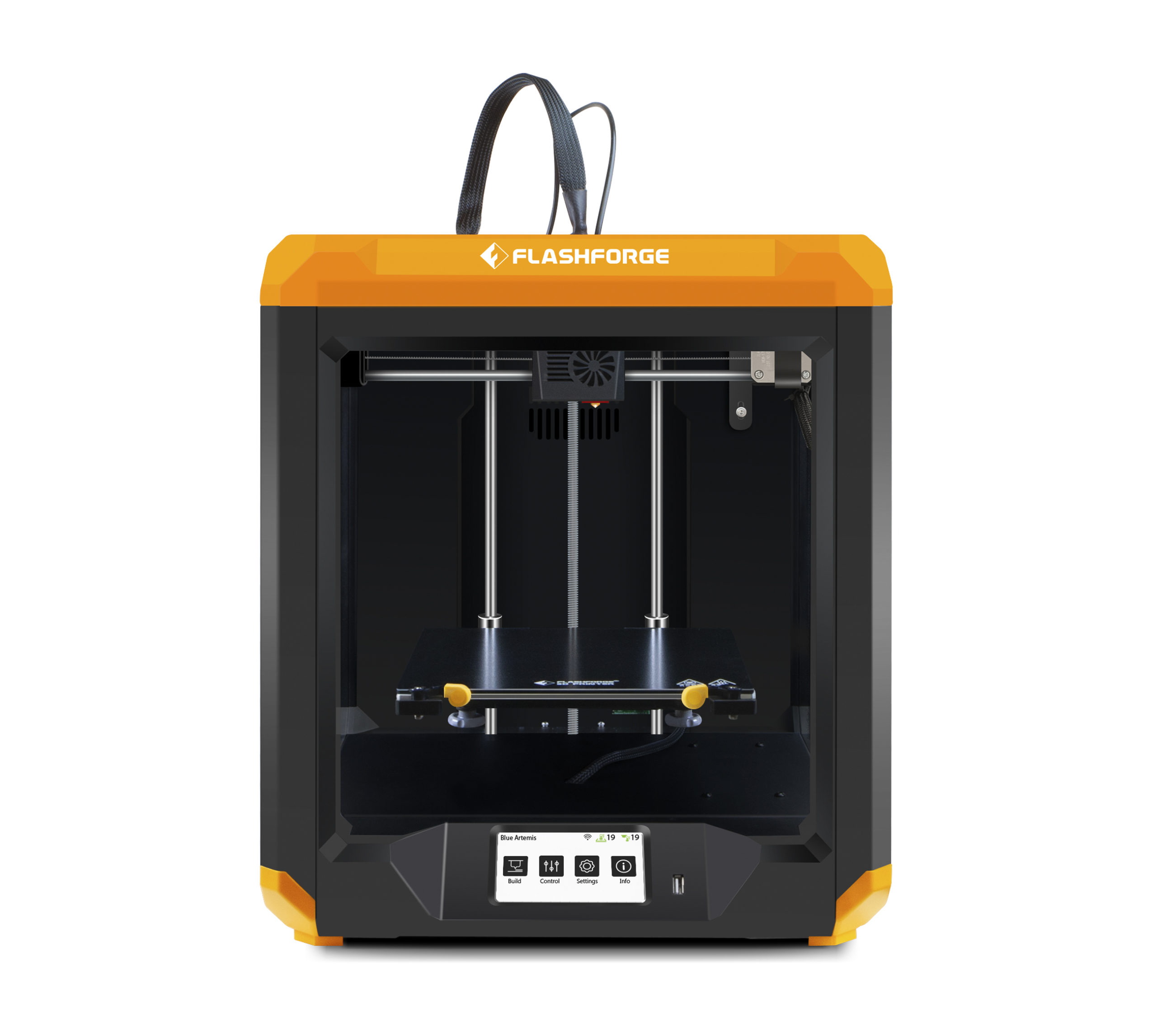
FlashForge has launched its newest 3D printer, tailored towards consumer and education audiences. Touted as a beginner-friendly 3D printer that also fits the needs of true 3D printing hobbyists, the FlashForge Artemis is a fused deposition modeling (FDM) 3D printer that provides excellent reliability and print quality, with many features that make it a true workhorse.
Nearly a Decade as Leader of 3D Printing Accessibility in the Home
FlashForge is a major manufacturer of consumer and commercial 3D printers that has gained a reputation of making 3D printing truly accessible to the at-home user through its prices and features. Nearly a decade after the release of its original, top-rated Creator 3D printer, FlashForge has been releasing many models of 3D printers with positive and impactful effects on the industry and its customers.
An All-around 3D Printer that Fits the Needs of Many Users
Artemis is a versatile 3D printer that utilizes filament extrusion technology to build objects layer by layer. With its direct drive extruder system, flexible materials such as TPU are significantly easier to print, while resulting in better quality. The single printhead is capable of delivering up to 260°C, enough to process a wide variety of filaments, ranging from PLA, ABS, and HIPS to PETG, TPU 95A, and more. The build plate also has a temperature range of up to 110°C. Users can choose to use either a glass or PEI magnetic bed, depending on individual printing needs. With the glass bed, the bottom of the printed objects are smoother, while the magnetic, flexible bed makes removing objects a breeze.
FlashForge generously gave Artemis a large print area of 190(L) × 195(W) × 200(H) mm. The z-axis is tall enough to fit a standard 8” bottle of water.
Artemis is designed to be compatible with 3rd party slicing software and is not limited to using FlashForge FlashPrint. This provides a seamless user experience for those who may be more familiar with other slicing software on the market or ones provide by other 3D printer manufacturers. However, for users who prefer to stay within the FlashForge ecosystem, Flashprint is also a very capable slicing software that will work natively with Artemis. With a 4.3-inch LCD touchscreen, navigating Artemis to adjust its settings or update its firmware is intuitive and easy. With a Wi-Fi-ready connection, users can send the model from the slicing software directly to Artemis without any cable attachments.
Technical Specifications
Print Technology FFF (Fused Filament Fabrication)
Number of extruders 1
Print volume 190 x 195 x 200 mm (8.7 x 7.9 x 9.8 in)
Printer Dimension 406(L) x 416(W) x 469(H) mm, (16 x 16.4 x 18.5 in)
Connectivity USB, Wi-Fi, and internal storage
Filament Diameter: 1.75mm
Filament Compatibility: PLA, ABS, HIPS, PETG, TPU 95A
Heated Build Plate Temperature: Up to 110°C (230°F)
Slicing Software: FlashPrint / Cura / Simplify 3D
File Input Format: 3MF / AMF / STL / OBJ / FPP / BMP / PNG / JPEG
FlashForge Artemis is available as an exclusive model in the North American market and can be purchased directly from its resellers and FlashForge USA with delivery from its Los Angeles facility. There is also an education bundle that includes three lessons plans and spools of filament. For those interested in the package, learn more through the FlashForge education bundle page.
Subscribe to Our Email Newsletter
Stay up-to-date on all the latest news from the 3D printing industry and receive information and offers from third party vendors.
Print Services
Upload your 3D Models and get them printed quickly and efficiently.
You May Also Like
3D Printing News Briefs, July 2, 2025: Copper Alloys, Defense Manufacturing, & More
We’re starting off with metals in today’s 3D Printing News Briefs, as Farsoon has unveiled a large-scale AM solution for copper alloys, and Meltio used its wire-laser metal solution to...
3DPOD 260: John Hart on VulcanForms, MIT, Desktop Metal and More
John Hart is a Professor at MIT; he´s also the director of the Laboratory for Manufacturing and Productivity as well as the director of the Center for Advanced Production Technologies....
3D Printing News Briefs, June 28, 2025: Defense Accelerator, Surgical Models, & More
In this weekend’s 3D Printing News Briefs, 3YOURMIND was selected to join an EU Defense Accelerator, and PTC has announced model-based definition (MBD) capabilities within Onshape. Finally, a study out...
EOS in India: AM’s Rising Star
EOS is doubling down on India. With a growing base of aerospace startups, new government policies, and a massive engineering workforce, India is quickly becoming one of the most important...



































